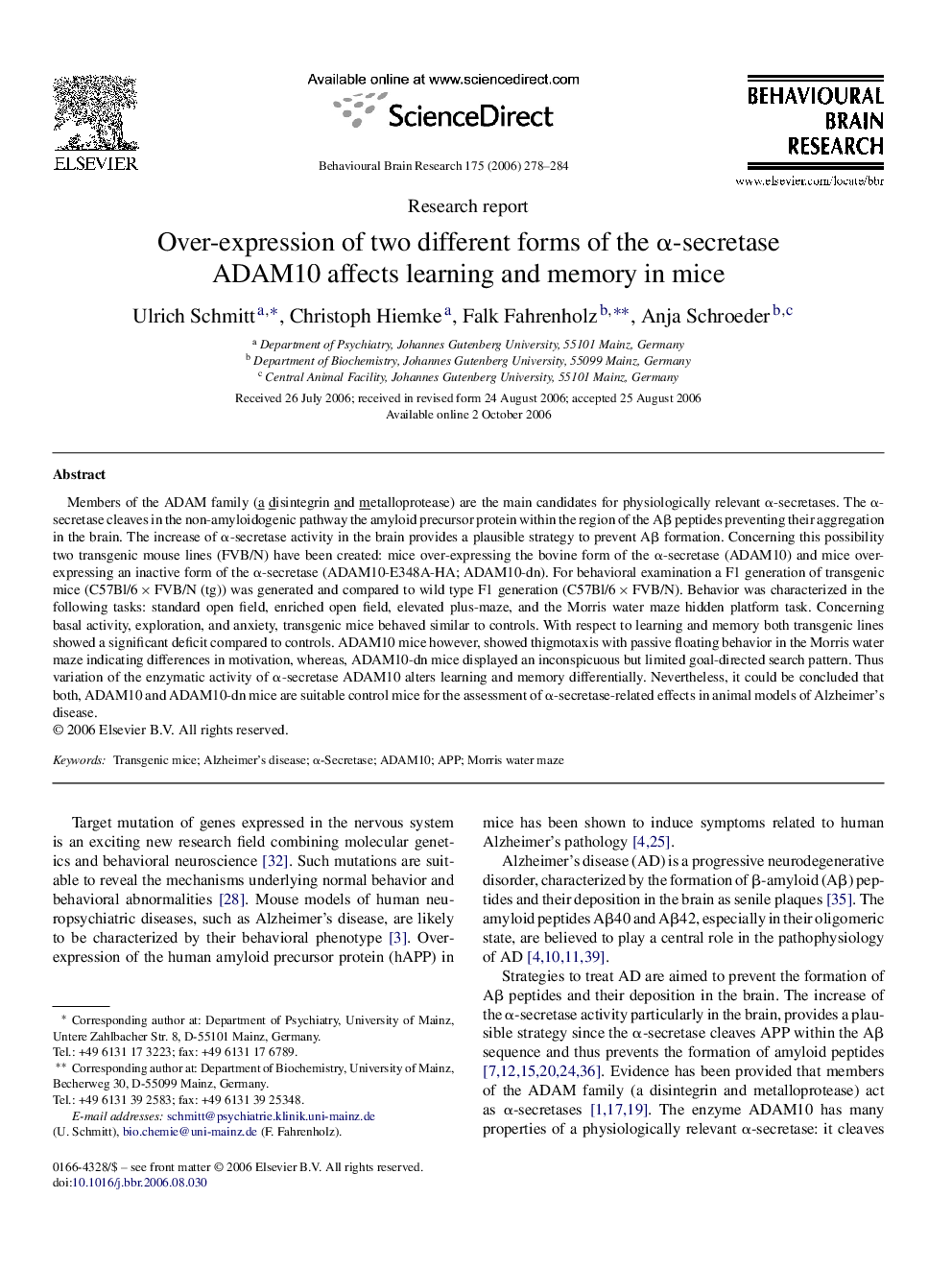| Article ID | Journal | Published Year | Pages | File Type |
|---|---|---|---|---|
| 4315897 | Behavioural Brain Research | 2006 | 7 Pages |
Members of the ADAM family (adisintegrin and metalloprotease) are the main candidates for physiologically relevant α-secretases. The α-secretase cleaves in the non-amyloidogenic pathway the amyloid precursor protein within the region of the Aβ peptides preventing their aggregation in the brain. The increase of α-secretase activity in the brain provides a plausible strategy to prevent Aβ formation. Concerning this possibility two transgenic mouse lines (FVB/N) have been created: mice over-expressing the bovine form of the α-secretase (ADAM10) and mice over-expressing an inactive form of the α-secretase (ADAM10-E348A-HA; ADAM10-dn). For behavioral examination a F1 generation of transgenic mice (C57Bl/6 × FVB/N (tg)) was generated and compared to wild type F1 generation (C57Bl/6 × FVB/N). Behavior was characterized in the following tasks: standard open field, enriched open field, elevated plus-maze, and the Morris water maze hidden platform task. Concerning basal activity, exploration, and anxiety, transgenic mice behaved similar to controls. With respect to learning and memory both transgenic lines showed a significant deficit compared to controls. ADAM10 mice however, showed thigmotaxis with passive floating behavior in the Morris water maze indicating differences in motivation, whereas, ADAM10-dn mice displayed an inconspicuous but limited goal-directed search pattern. Thus variation of the enzymatic activity of α-secretase ADAM10 alters learning and memory differentially. Nevertheless, it could be concluded that both, ADAM10 and ADAM10-dn mice are suitable control mice for the assessment of α-secretase-related effects in animal models of Alzheimer's disease.
